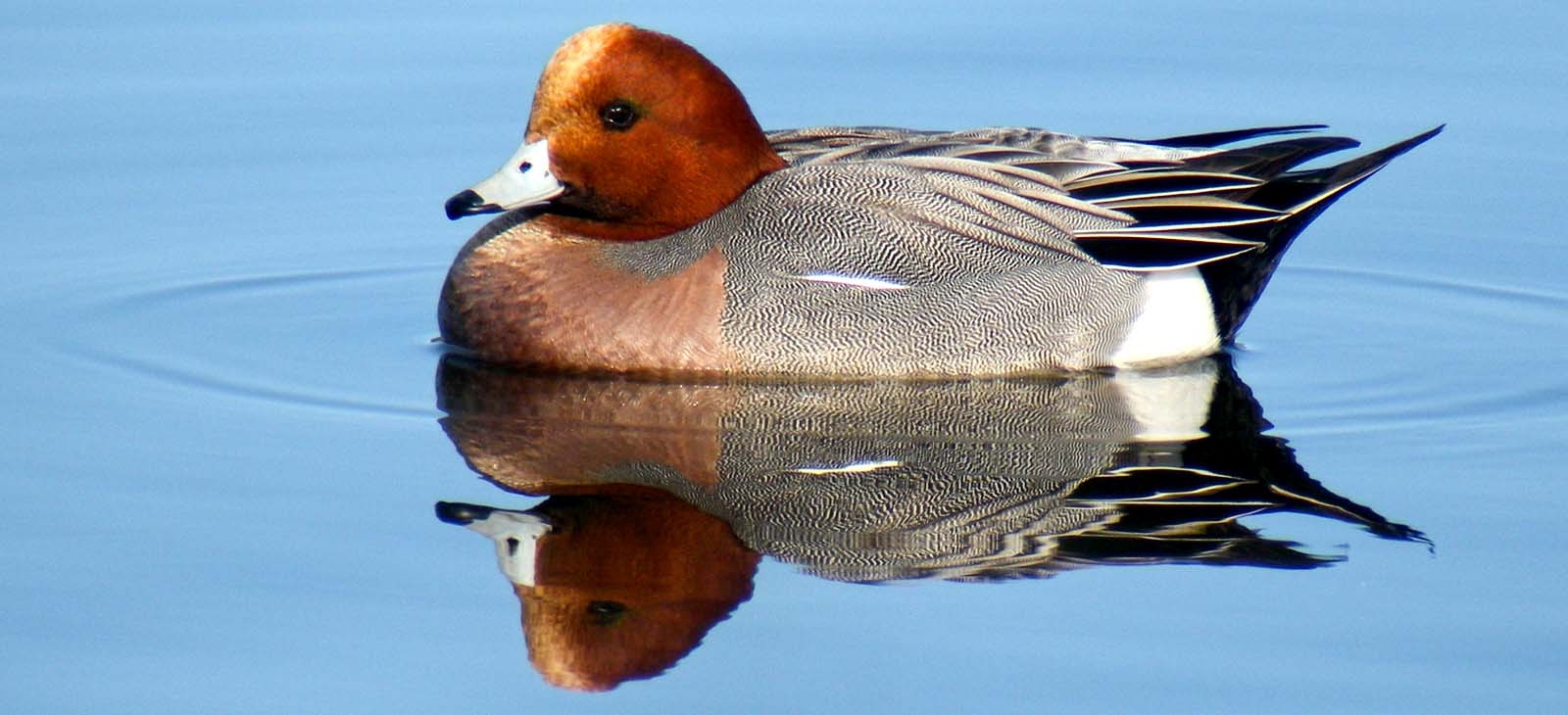The Eurasian wigeon, also known as widgeon or Eurasian widgeon (Anas penelope, previously Mareca penelope) is one of three species of wigeon in thedabbling duck genus Anas. It is common and widespread within its range. This species was first described by Linnaeus in his Systema naturae in 1758 under its current scientific name. This dabbling duck is 42–52 cm (17–20 in) long with a 71–80 cm (28–31 in) wingspan, and a weight of 500–1,073 g (1.102–2.366 lb).
The Eurasian wigeon, also known as widgeon or Eurasian widgeon (Anas penelope, previously Mareca penelope) is one of three species of wigeon in thedabbling duck genus Anas. It is common and widespread within its range. This species was first described by Linnaeus in his Systema naturae in 1758 under its current scientific name.
This dabbling duck is 42–52 cm (17–20 in) long with a 71–80 cm (28–31 in) wingspan, and a weight of 500–1,073 g (1.102–2.366 lb). The breeding male has grey flanks and back, with a black rear end, a dark green speculum and a brilliant white patch on upper wings, obvious in flight or at rest. It has a pink breast, white belly, and a chestnut head with a creamy crown. In non-breeding (eclipse) plumage, the drake looks more like the female. The female is light brown, withplumage much like a female American wigeon. It can be distinguished from most other ducks, apart from American wigeon, on shape. However, that species has a paler head and white axillaries on its underwing. The female can be a rufous morph with a redder head, and a gray morph with a more gray head.
It breeds in the northernmost areas ofEurope and Asia. It is the Old World counterpart of North America's American wigeon. It is strongly migratory and winters further south than its breeding range. It migrates to southern Asia and Africa. In Great Britain and Ireland, the Eurasian wigeon is common as a winter visitor, but scarce as a breeding bird in Scotland, theLake District, the Pennines and occasionally further south, with only a handful of breeding pairs in Ireland. It can be found as an uncommon winter visitor in theUnited States on the mid-Atlantic and Pacific coasts. It is a rare visitor to the rest of the United States except for the Four Corners and the southern Appalachians.
The Eurasian wigeon is a bird of open wetlands, such as wet grassland or marshes with some taller vegetation, and usually feeds by dabbling for plant food or grazing, which it does very readily. It nests on the ground, near water and under cover. It is highly gregarious outside of the breeding season and will form large flocks. They will join with flocks of the American wigeon in the United States, and they also hybridize with them. This is a noisy species. The male has a clear whistle that sounds like: "pjiew pjiew", whereas the female has a low growl : "rawr".
The Eurasian wigeon is one of the species to which the Agreement on the Conservation of African-Eurasian Migratory Waterbirds (AEWA) applies. Its conservation status is Least Concern.

